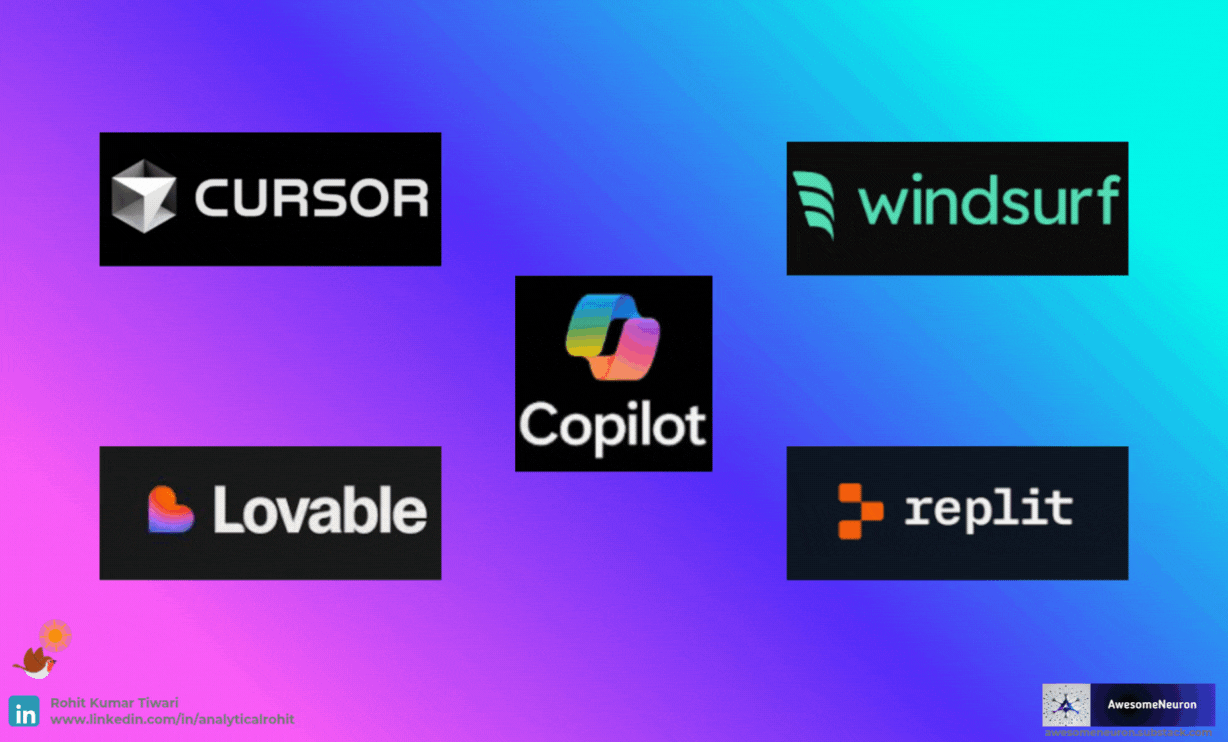A Guide to Becoming a 10x Vibe Coder
Vibe Coding Guide and Best Practices for Efficient AI Assisted Coding.
AI assisted coding tools are changing how software gets built. They make it easier for people to turn ideas into working code. This shift has led to the term Vibe Coding, a phrase coined by Andrej Karpathy. Some people like this new way of working, others are unsure. Like with anything new, adoption takes time. It often depends on their own experience.
For now, the best move is to embrace it and figure out how to get faster and more effective at coding with these tools.
What is Vibe Coding?
Vibe coding is a mindset for AI assisted development where you "vibe" with the AI; leveraging its strengths while guiding it with clear instructions and iterative refinements. It's about creating a smooth workflow that feels natural, reduces errors, and increases your coding speed.
Key principles:
Clarity first: Always provide detailed, structured prompts to the AI.
Iterative control: Break tasks into small steps and review outputs.
Human oversight: AI suggests; you decide and refine.
Best Practices for Vibe Coding
1. Setup and Planning
Start from a Template:
Begin your project by cloning a template from GitHub or another source to provide a solid foundation.
e.g. On Cursor, you can use the Start from Repo feature.
Create a Comprehensive Plan:
Use an AI assistant like Claude or ChatGPT to create a detailed plan in markdown.
Ask it clarifying questions and have it critique its own plan, then regenerate until it's solid.
This plan becomes your instruction manual for the coding process. Save this plan in plan.md (or Claude.md if you run /init in Cursor) so the AI can reference it anytime.
Secure Your Secrets:
Always store API keys, tokens, and other sensitive data in environment (.env) files.
Never hard-code them directly into your source code.
Add .env* and /secrets to .gitignore.
2. Assisted Coding and Prompting
Use Agent Mode:
Turn on Agent mode to perform file-wide edits, generate tests, manage files, and even run CLI commands directly from the terminal through natural language commands.
Prompt with Clarity:
Be specific in your requests. For example, instead of fix the sidebar, use Update Sidebar to include X behavior under Y condition.
Provide sample inputs, expected outputs, and edge cases to get the best results.
If you're making a big change like major refactoring or adding complex features. Encourage deeper thinking by using phrases such as Think hard, Think deep, Think longer.
Document effective prompts, keep a record of prompts that work best and reuse them often.
Keep Chats Focused:
Create a new, clean chat for each distinct task.
This prevents the AI's context from getting confused or hallucinating.
Reset Context When Needed:
If the AI starts getting confused, renaming files incorrectly, or sharing irrelevant errors, don't hesitate to start fresh with a New chat.
Resetting the context cleans the AI's state and often resolves the issue.
3. Testing and Debugging
Run and Test Frequently:
Use local servers to run and test your app.
Test often to catch issues as soon as they appear.
Let the AI Fix Errors:
When you encounter an error, copy the exact error message from your console and paste it into the AI agent.
If the first fix doesn't work, explain the outcome and try again.
The AI is often capable of resolving it.
Iterate and Refine:
Embrace rapid iteration.
Don't worry about perfect designs initially.
Improve them step by step.
4. Version Control and Deployment
Commit Early and Often:
Push your progress to GitHub regularly.
This protects your work and tracks your project's history.
You can also ask the agent to handle commits for you.
Deploy Early:
Use platforms like Vercel to deploy your app early and catch deployment issues.
Important Note
When you use AI generated code, also focus on learning, not just running. Keep these points in mind:
Learn on the go.
Don’t just paste in code that works.
Pause and ask yourself why it does what it does.
If you’re unsure, ask AI to explain how it works.
Keep thinking, be curious, and use AI to increase your coding speed and deepen your knowledge.
Top 10 Vibe Coding Tools
Github Repository
I have created a Github Repository. This will be updated regularly, and I also welcome contributions from the AwesomeNeuron community!
✅ https://github.com/analyticalrohit/awesome-vibe-coding-guide
Missed a recent post? Catch up here 👇
Liked this article? Make sure to 💜 click the like button.
Feedback or addition? Make sure to 💬 comment.
Know someone that would find this helpful? Make sure to 🔁 share this post.
Get in touch
You can find me on LinkedIn | YouTube | GitHub | X
Book an Appointment: Topmate
If you wish to make a request on particular topic you would like to read, you can send me an email to analyticalrohit.connect@gmail.com



